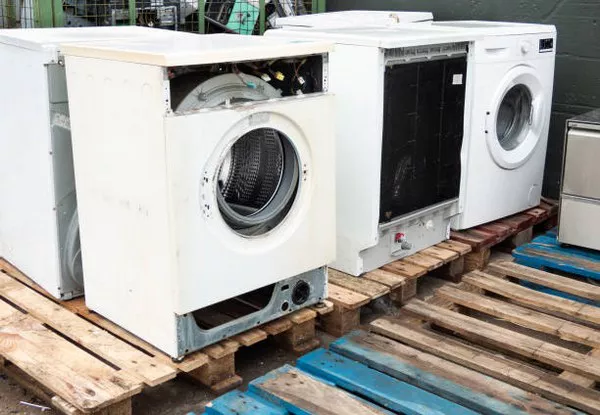The need for reliable power sources is a constant consideration in our modern world. While outdoor generators have long been the go-to solution for backup power, especially during outages or in remote locations, the idea of indoor generators has garnered increasing interest. This article explores whether there are generators that can be used safely indoors, examining their types, safety considerations, and practical applications.
Understanding the Challenges
Using generators indoors presents significant challenges primarily due to the risks associated with combustion-based generators. Traditional generators, which run on gasoline, diesel, or propane, produce exhaust gases that include carbon monoxide (CO)—a colorless, odorless, and deadly gas. Even small amounts of CO can be fatal, making the indoor use of such generators highly dangerous and generally inadvisable. However, technological advancements have led to the development of alternatives that mitigate these risks, allowing for safe indoor use under certain conditions.
Types of Indoor Generators
Battery-Powered Generators
Battery-powered generators, often referred to as portable power stations, are the most viable option for indoor use. These devices store electrical energy in batteries and can be recharged via standard electrical outlets, solar panels, or even car chargers. Because they do not rely on combustion, they produce no emissions, making them safe for indoor use.
Advantages:
- Zero emissions
- Quiet operation
- Easy to recharge
- Safe for indoor use
Limitations:
- Limited power output compared to traditional generators
- Requires recharging after depletion
Fuel Cell Generators
Fuel cell technology converts chemical energy directly into electrical energy through a chemical reaction between hydrogen and oxygen, producing only water and heat as byproducts. This technology is used in some high-end indoor generators, offering a clean and efficient power source.
Advantages:
- High efficiency
- Clean energy with water as the only byproduct
- Continuous power supply as long as fuel is available
Limitations:
- High cost
- Limited availability of hydrogen fuel
- Complex infrastructure requirements
UPS Systems with Integrated Batteries
Uninterruptible Power Supply (UPS) systems are commonly used to provide backup power for critical electronic equipment. While traditionally used for short-term power outages, some advanced models come with integrated high-capacity batteries that can power entire systems for extended periods.
Advantages:
- Immediate power backup
- Can be integrated with existing electrical systems
- Zero emissions
Limitations:
- Typically designed for short-duration power backup
- Limited capacity for high-energy appliances
Safety Considerations
Regardless of the type of indoor generator used, several safety considerations must be adhered to:
Ventilation: Proper ventilation is crucial to prevent the buildup of heat or, in the case of fuel cell generators, to manage the water byproduct. Ensuring adequate air circulation can prevent overheating and maintain a safe operating environment.
Load Management: It is essential to understand the power requirements of the devices being connected to the generator. Overloading the generator can lead to overheating, damage to the generator, or even fire hazards. Users should ensure that the total wattage of connected devices does not exceed the generator’s capacity.
Battery Safety: For battery-powered generators, ensuring the batteries are in good condition is vital. Damaged or improperly maintained batteries can pose risks of leakage, fire, or explosion. Regular checks and maintenance, along with using batteries from reputable manufacturers, can mitigate these risks.
Regular Maintenance: Like any other equipment, indoor generators require regular maintenance to ensure they function correctly. This includes checking battery health, inspecting connections, and ensuring any fuel cells or UPS systems are in good working order.
Practical Applications
Indoor generators have a wide range of practical applications across various scenarios:
Residential Use: In homes, indoor generators can provide backup power during outages, ensuring that essential devices such as refrigerators, medical equipment, and communication devices remain operational. Battery-powered generators are particularly popular for their ease of use and safety.
Commercial Settings: Businesses, especially those that rely on continuous power for critical operations like data centers, healthcare facilities, and financial institutions, benefit from indoor generators. UPS systems with integrated batteries are commonly used in these settings to ensure no interruption in power supply.
Emergency Services: During disasters or emergencies, maintaining power for critical infrastructure such as emergency response centers, hospitals, and shelters is crucial. Portable power stations and fuel cell generators can provide reliable power in such situations.
Recreational Use: For activities like camping, RVing, or tailgating, where access to outdoor power sources might be limited, battery-powered generators offer a convenient and safe solution to power lights, small appliances, and electronic devices.
Remote Work and Home Offices: With the rise of remote work, ensuring a stable power supply for home offices has become a priority. Indoor generators can provide a reliable backup to keep computers, routers, and other essential office equipment running during power outages.
Innovations and Future Prospects
The field of indoor generators continues to evolve, with ongoing research and development focusing on improving efficiency, capacity, and affordability. Innovations in battery technology, such as solid-state batteries and advanced lithium-ion batteries, promise to enhance the performance of portable power stations. Similarly, advancements in fuel cell technology could lead to more widespread adoption as costs decrease and infrastructure improves.
Moreover, integrating renewable energy sources, such as solar panels, with indoor generators can create a sustainable and eco-friendly power solution. Hybrid systems that combine battery storage with solar energy harvesting are already being used in some residential and commercial applications, providing a glimpse into the future of indoor power generation.
See Also How Much Gas Does It Take to Run a Generator?
Conclusion
The feasibility of using generators indoors hinges on choosing the right type of generator that addresses the inherent safety concerns. Battery-powered generators, fuel cell generators, and UPS systems with integrated batteries offer viable solutions for various applications. By adhering to safety guidelines and keeping abreast of technological advancements, users can ensure a reliable and safe indoor power supply, meeting the growing demands of modern life. As innovation continues to drive the development of cleaner and more efficient indoor generators, the future holds promising possibilities for enhanced energy resilience and sustainability.

